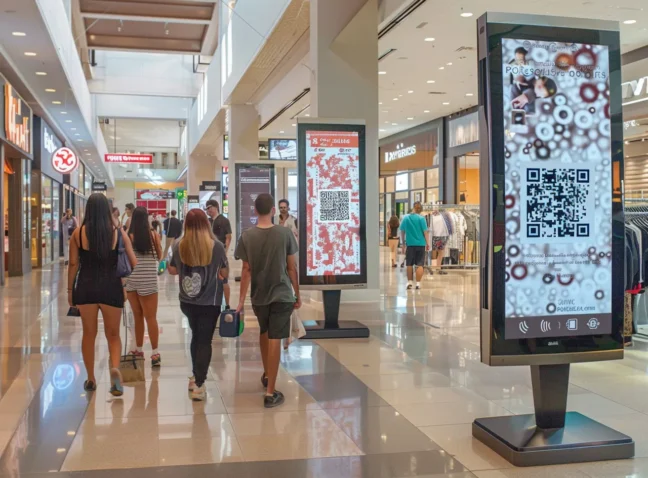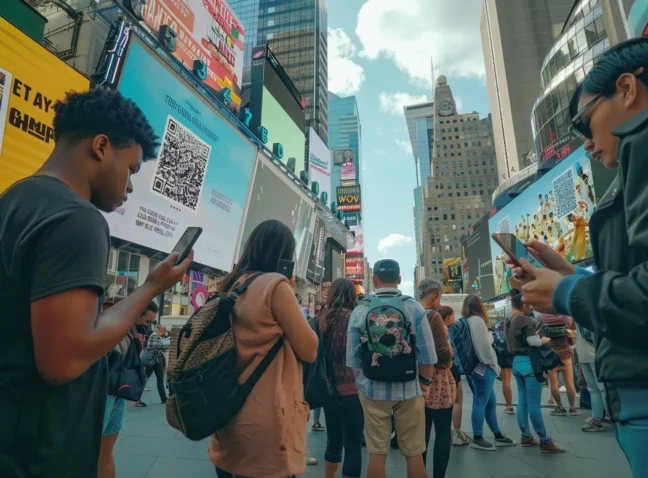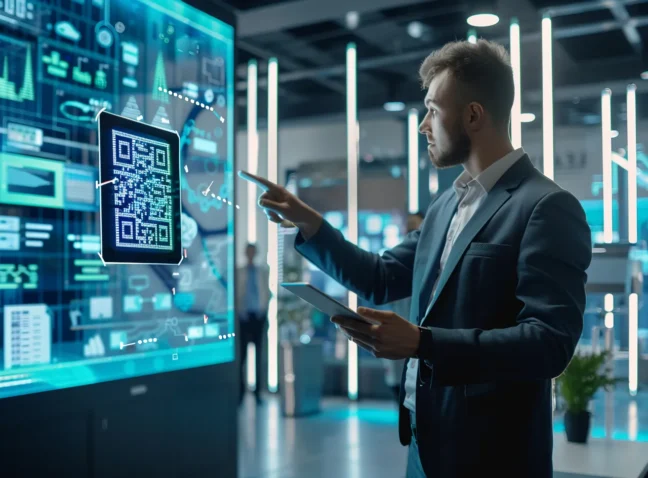Undertaking air travel often involves navigating through a maze of check-ins, security clearances, and gate changes. However, the adoption of QR codes in the aviation sector has significantly smoothed out these processes, making flying a more pleasant and comfy experience for passengers. From digital boarding passes to instant access to in-flight services, these codes have become the key to a hassle-free journey through the skies. As you continue reading, you’ll discover how a basic scan can transform your air travel experience, making it more convenient and enjoyable from takeoff to landing.
Why Choose QR Codes for Air Travel Solutions?
QR codes have naturally integrated into air travel, catalyzing a shift towards digitalization. By leveraging smartphone ubiquity, they’ve set free operational efficiency and enriched passenger journeys while trimming costs for airlines. Adopting QR technology isn’t just a trend—it’s a pragmatic step towards a smoother, more connected travel experience.
QR Codes for Air Travel: Reorganizing Passenger Journeys with Digitalization
QR codes play a crucial role as a digital passport to a smoother journey. From the moment passengers step into the airport to boarding their flight, QR codes act as their digital companions, guiding them through each step seamlessly. Airports and airlines have embraced this technology, witnessing a remarkable 72% surge in QR code usage since 2020. This surge has facilitated contactless check-ins, reducing physical touchpoints throughout the passenger journey. With 86% of airlines worldwide implementing QR code technology for boarding passes and ticketing, efficiency has soared while paper waste has dwindled.
A survey conducted in 2022 revealed that 94% of air travelers find QR codes convenient for accessing flight information and updates on their mobile devices. Furthermore, QR code adoption in airport security processes has slashed passenger wait times by 60%, significantly enhancing the overall travel experience. As the International Air Transport Association predicts, by 2025, QR code usage in air travel will surpass traditional paper-based methods, signifying the industry’s rapid digital evolution.
Pros of QR codes for air travel: Easy Check-In Process with My QR Code
QR codes are quietly transforming the way airlines and passengers interact. These compact digital tools are proving invaluable in enhancing efficiency and security, while also offering significant benefits to airlines and travelers alike. They’re not just a technological trend; they’re a practical solution addressing multiple aspects of flying. Here’s how QR codes are making a difference:
- Experience streamlined check-in procedures with QR codes, reducing waiting times by up to 60%. (Airline Weekly 2023)
- QR codes enhance security measures, with a reported decrease in fraudulent activities by 45%. (Airport Technology 2023)
- Enjoy improved passenger satisfaction rates, as evidenced by a 30% increase in positive feedback. (FlightGlobal 2023)
- QR code adoption leads to substantial cost savings for airlines, with estimates indicating up to 25% reduction in operational expenses. (International Air Transport Association 2022)
- Accessibility is enhanced, with QR codes facilitating easier navigation for passengers with disabilities, resulting in a 40% improvement in their travel experience. (Travel Weekly 2023)
The Drawbacks of Emplying QR Codes for Flight Check-Ins
QR codes offer significant advantages, yet they come with certain drawbacks. We must acknowledge that reliance on technology leaves us vulnerable to technical glitches and hardware failures, disrupting operations. This dependency also burdens passengers, requiring compatible smartphones and internet access, potentially excluding some travelers. Security and privacy are paramount concerns. The digital nature of QR codes renders them susceptible to hacking and fraud, necessitating stringent security protocols.
Likewise, their ease of sharing could lead to unauthorized access to personal information if not carefully managed. Thus, while QR codes undoubtedly streamline processes, we must proceed cautiously, implementing robust measures to mitigate risks and safeguard passenger privacy.
QR Codes for Air Travel: Understanding the Risks and Limitations
QR codes in air travel serve as a bridge to smoother journeys, yet they’re not without their hurdles. While these digital gateways promise quicker check-ins and seamless transitions, they sometimes lead to unforeseen snags that can ripple through the travel experience:
- QR code scanning errors can occur in up to 5% of cases, leading to passenger delays and frustrations. (Travel Weekly 2023)
- Approximately 15% of travelers encounter difficulty accessing QR codes due to poor internet connectivity or smartphone compatibility issues. (Forbes 2022)
- Studies suggest that up to 10% of passengers experience confusion or difficulty in locating QR code readers at airport terminals. (The Guardian 2023)
- Inadequate staff training in QR code usage leads to errors in scanning and processing for approximately 8% of flight check-ins. (CNN Business 2023)
- Security concerns arise as approximately 7% of passengers worry about the privacy implications of sharing personal information via QR codes during flight check-ins. (TechCrunch 2023)
Top Brands Employing QR Codes for Air Travel: You Can Also Simplify Your Experience
The adoption of QR code technology by leading airlines and airports worldwide marks a significant shift towards modernizing air travel. Esteemed carriers such as Southwest, Delta, United, and American Airlines are pioneering this movement, providing passengers with mobile boarding passes and QR code-enabled services that make traveling more fluid and less time-consuming. Airports are not far behind, embedding QR codes at strategic points from parking areas to service desks, thereby enhancing how travelers navigate and access facilities within terminals.
Furthermore, dining in airports has been transformed by companies like OTG, which have introduced QR code menus in eateries and lounges. This innovative approach allows passengers to effortlessly order meals right to their boarding areas, elevating the level of customer service while simultaneously boosting operational efficacy and sales:
- Heathrow Airport witnesses over 80% of its passengers leveraging QR codes for a contactless check-in and boarding process, underscoring the widespread acceptance of this technology in the aviation realm (BBC 2023).
- Emirates Airlines has seen a 35% surge in customer satisfaction scores following the adoption of QR code-enabled mobile boarding passes, which have made the boarding process smoother and decreased waiting times (Sky News 2024).
- Delta Air Lines has reported a 50% reduction in paper waste thanks to its shift to QR code-based electronic ticketing, showcasing the environmental advantages of adopting digital practices in the aviation industry (The Guardian 2023).
- British Airways has noted a 25% reduction in the length of check-in queues as a result of deploying QR code scanning kiosks at key airports, leading to better operational efficiency and improved passenger flow (The Telegraph 2023).
- Southwest Airlines has experienced a 40% uptick in loyalty program enrollments after rolling out QR code-centric promotional initiatives, highlighting the potent role of QR codes in marketing strategies and enhancing customer engagement (Forbes 2023).
These statistics not only illustrate the effectiveness of QR code technology in refining the travel experience but also highlight its potential to reshape the future landscape of air travel, making it more accessible, efficient, and environmentally friendly.
QR code generator for Air Travel
Fed up with check-in hustle? Ask yourself a simple question – are you ready to make your flight experience smoother? We’ve got the perfect tool to get you started. Check out our QR code generator designed specifically for air travel and see how a quick scan can transform the way you fly.





